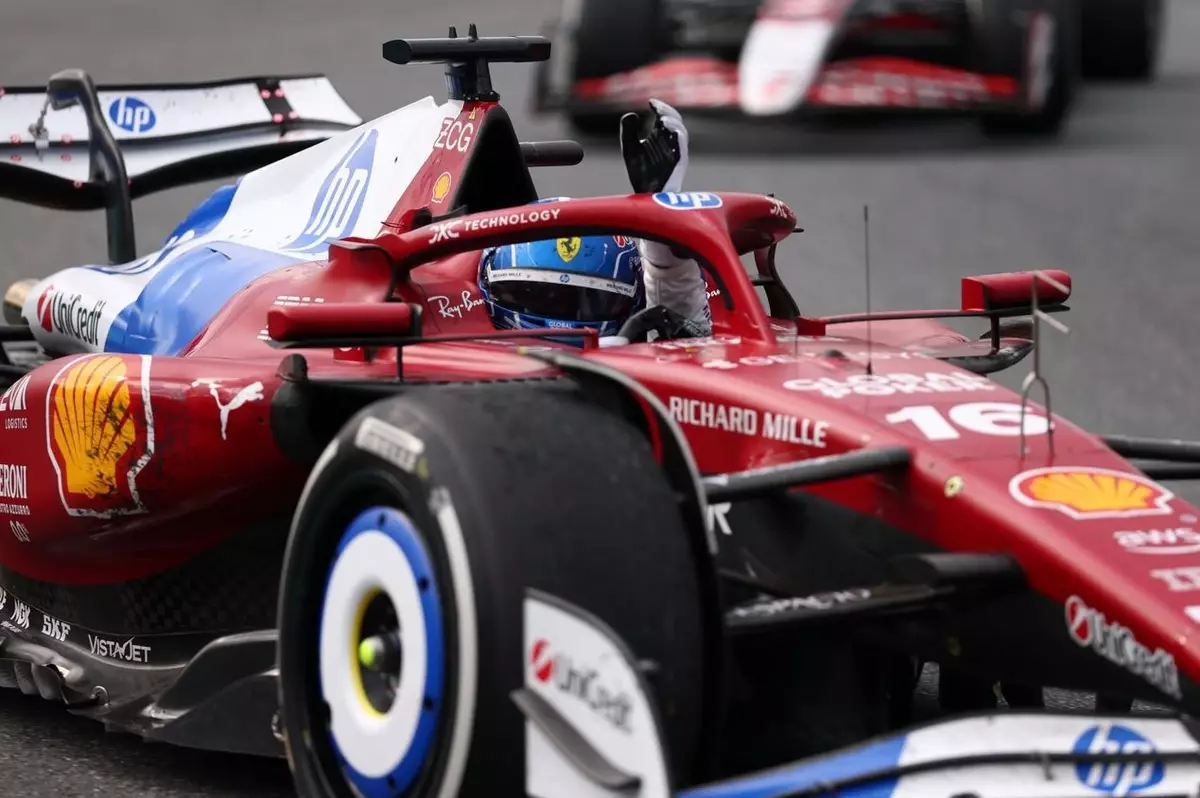Formula 1 is not just a battle of speed and engineering; it’s a psychological chess game that plays out on the racetrack, and the Miami Grand Prix showcased this intricately. During the race, Charles Leclerc and Lewis Hamilton found themselves embroiled in a tactical dispute, an episode that could have spiraled into deeper animosity but instead highlighted a crucial aspect of professional sports: effective communication and collaboration, even amidst fierce competition.
Leclerc’s insistence on having “no bad feelings” toward Hamilton after their strategy exchange provides a foundation for understanding the often invisible threads that hold a team together. In high-pressure environments, the stakes consist not only of personal victory but also of team morale. When Leclerc voiced support for Hamilton’s aggressive strategy, he was diplomatically acknowledging that both drivers held a vested interest in their shared goal—achieving the best possible outcome for Ferrari.
Strategic Conflicts and Performance Pressure
The race environment in Formula 1 creates a pressure cooker for drivers, engineers, and team leaders alike. During the Miami Grand Prix, Hamilton fell victim to his own strategy as he outpaced Leclerc on medium tyres while the latter was on harder compounds. Hamilton’s growing frustration was palpable, calling into question the decision-making processes within the team. Yet, Leclerc’s retrospective analysis sheds light on an essential truth: strategy discussions must be streamlined and cohesive to mitigate race-day chaos.
It appears that Leclerc recognized the need for improvement at Ferrari, suggesting that more robust communication protocols could alleviate confusion during critical moments. His statement reiterates the importance of collective strategy over individual ambition. While Hamilton’s desire for a different tactical approach was understandable, Leclerc’s insight suggested that their team needed to focus not just on fixing immediate issues but on long-term procedural frameworks.
The Human Element in Competitive Racing
Leclerc’s reflections on their shared struggles during the race amplify the human element that intercedes amidst technological advancements in F1. Both drivers faced the unrelenting challenge of strategizing while simultaneously managing their vehicles under intense conditions. Leclerc’s anguished radio messages expressed not only his desire to perform but also the crippling anxiety that accompanies competitive racing when communication falters.
It’s critical to acknowledge that the mental state of a driver affects their performance and relationships on the circuit. When Leclerc articulated his struggles with “dirty air,” he was not merely expressing frustration but revealing a fragility common to elite athletes. The interplay of technical challenges and psychological burdens illustrates how much is at stake beyond just points. It emphasizes that effective collaboration among teammates can be a game-changer.
Lessons in Growth and Accountability
Leclerc’s post-race demeanor was strikingly introspective, as he expressed a commitment to learn from the day’s events. In an environment where glorification of relentless competition often overshadows self-reflection, Leclerc’s approach encourages a culture of accountability. He didn’t shy away from acknowledging that Ferrari’s strategy needed more work; he embraced the challenge of improvement.
This stance on growth reveals a crucial aspect of team chemistry in Formula 1: the ability to candidly critique and evolve rather than assign blame. Rather than vilifying Hamilton for his strategy complaints, Leclerc chose to see the larger picture, advocating for a unified front that seeks to capitalize on collective potential rather than individual error.
The Road Ahead for Ferrari
The Miami Grand Prix served as a wake-up call, not just for Leclerc and Hamilton individually, but for the Ferrari team as a whole. Their ability to navigate future strategic conflicts hinges on improving their communication structure—not just during races, but throughout all preparatory phases. As both drivers aim for excellence, the team must evolve to meet their ambitions through effective collaboration, keeping in mind that every race is an opportunity for growth and learning.
In a realm where every millisecond matters, the relationship between teammates can serve as either a boon or a hindrance. The Miami episode thus stands as a testament to the complexities of team dynamics in sport, illuminating the pathways toward greater teamwork and shared success that resonate far beyond the track.


Leave a Reply